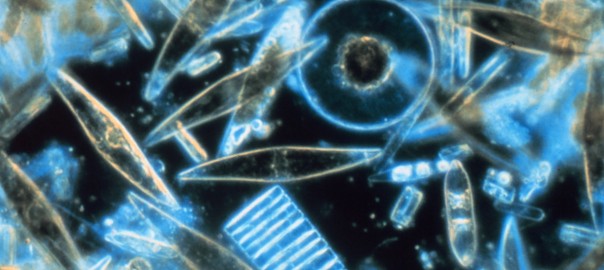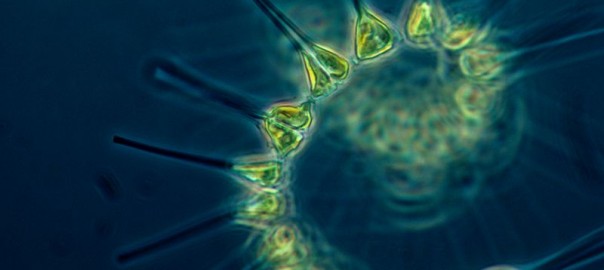Publication
Ward, B.A., S. Dutkiewicz, and M.J. Follows (2014) Modelling spatial and temporal patterns in size-structured marine plankton communities: top-down and bottom-up controls, Journal of Plankton Research, 0, 1-17, doi:10.1093/plankt/fbt097
Ward, B.A., S. Dutkiewicz, and M.J. Follows (2014) Modelling spatial and temporal patterns in size-structured marine plankton communities: top-down and bottom-up controls, Journal of Plankton Research, 0, 1-17, doi:10.1093/plankt/fbt097
Winners and Losers: Phytoplankton in a Changing Climate
Stephanie Dutkiewicz at MIT Future Ocean Symposium, September 9, 2013.
Clayton, S., S. Dutkiewicz , O. Jahn, and M.J. Follows (2013), Ocean eddies and dispersal maintain phytoplankton diversity, Limnology and Oceanography, Fluids and Environments, Volume 3: 182–197, doi: 10.1215/21573689-2373515
Ward, B.A., S. Dutkiewicz, and M.J. Follows (2013), Top-down and bottom-up controls in a global size-structured plankton food-web model, Journal of Plankton Research , 0, 1-17, doi: 10.1093/plankt/fbt097

Predators’ switching towards the most abundant prey is a mechanism that stabilizes population dynamics and helps overcome competitive exclusion of species in food webs. However, current formulations of active prey-switching in marine ecosystem models display non-maximal feeding; the total ingestion of prey by predators decays exponentially with the number of prey species even though the total prey biomass stays constant.
Continue reading The dynamics of dining in an all-you-can-eat-phytoplankton buffet
Vallina, S. M. , B. A. Ward, S. Dutkiewicz, and M. J. Follows (2013), Maximal feeding with active prey-switching: a kill-the-winner functional response and its effect on global diversity and biogeography, Progress in Oceanography, 120, 93–109, doi: 10.1016/j.pocean.2013.08.001
Goebel, N.L., C.A. Edwards, J.P. Zehr, M.J. Follows and S.G. Morgan (2013), Modeled phytoplankton diversity and productivity in the California Current System, Ecological Modelling, vol. 264, pp. 37, doi: 10.1016/j.ecolmodel.2012.11.008

by Alli Gold Roberts (MIT Joint Program on the Science and Policy of Global Change)
Read this story at MIT News
Phytoplankton — small plant-like organisms that serve as the base of the marine ecosystem — play a crucial role in maintaining the health of our oceans by consuming carbon dioxide and fueling the food web. But with a changing climate, which of these vital organisms will survive, and what impact will their demise have on fish higher up the chain?
Stephanie Dutkiewicz, a researcher with the MIT Joint Program on the Science and Policy of Global Change, and her colleagues developed a model that investigates the potential effects of climate change on phytoplankton.
Ice-core measurements reveal a highly asymmetric cycle in Antarctic temperature and atmospheric CO2 over the last 800,000 years. Both CO2 and temperature decrease over 100,000 years going into a glacial period, then rise steeply over less than 10,000 years at the end of a glacial. There does not yet exist wide agreement about the causes of this cycle or about the origin of its shape. In this article, recently accepted in the journal Global Biogeochemical Cycles, Darwin researchers Anne Willem Omta, Mick Follows and co-authors, explore the possibility that an ecologically driven oscillator may play a role in the dynamics.
Continue reading On the potential role of marine calcifiers in glacial-interglacial dynamics
Ward, B.A., S. Dutkiewicz, C.M. Moore and M.J. Follows (2013), Iron, phosphorus, and nitrogen supply ratios define the biogeography of nitrogen fixation Limnology and Oceanography, vol. 58, pp. 2059, doi: 10.4319/lo.2013.58.6.2059